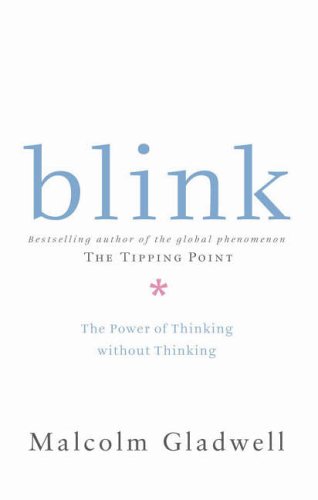« Top Five 'Hover' Tones |
Main
| Charles Limb: Building the musical muscle »
 December 8, 2011 | Thin-slicing and Music Theory December 8, 2011 | Thin-slicing and Music Theory
 Best-selling author Malcolm Gladwell probes into the concept of thin-slicing in his breakthrough book, "Blink: The Power of Thinking Without Thinking." It's a survival concept we take for granted, the ability to assess a multitude of cerebral complexities in situations and compress them into a fast reacting response. Best-selling author Malcolm Gladwell probes into the concept of thin-slicing in his breakthrough book, "Blink: The Power of Thinking Without Thinking." It's a survival concept we take for granted, the ability to assess a multitude of cerebral complexities in situations and compress them into a fast reacting response.
Say a large carton of roof shingles comes tumbling off a roof at a construction site and you happen to be standing beneath at impact. You hear it sliding, look up, and jump out of harm's way. Your reaction is primal instinct. Move. No calculating the speed of the fall, weight of the box, complex formulas of mass and velocity. Protective brain synapsis fire "Move, body!" and you do, sans science or physics. Your decision is reduced, "thin-sliced" out of necessity simply because to survive, or at least avoid a bruising blow, you judge you needed to move.
Music theory is a lot of science and mental calculating. We preach knowing the fundamentals to be able to understand chord context and intentionally create great sounding melodies during improvisation. Knowing when to plug in a Lydian mode or that the dominant chord requires a flatted 7th is important for moving around in music, but we can let it bog us down, especially when the music flows at light speed.
The purpose of drilling scales and modes, practicing chord progression is to internalize them so well you don't have to think. Like stepping out of the way of roofing shingles, you need to be able to just react at that Secondary Dominant chord, and raise the F natural to an F#. When the scales are familiar enough, it becomes more feel than calculation.
Listening to music involves more of this thin-slicing than we realize. Creating music that's intentional and appropriate requires us to be able to thin-slice, too.
Blink is a fascinating read, helpful in understanding our own decision making processes. We encourage you to add it to your library.
Purchase Book:
Kindle: Blink: The Power of Thinking Without Thinking
Blink: The Power of Thinking Without Thinking

Further
Variables
The Basics of Auditioning Instruments
Approaching Improvisation
Suspicion of Melodic Intent
The Jazz Brain; Improv
Posted by Ted at December 8, 2011 3:23 PM

Disclaimer: In the 'Information Age' of the 21st Century,
any fool with a computer, a modem, and an idea can
become a self-professed 'expert." This site does not
come equipped with 'discernment.'
|



